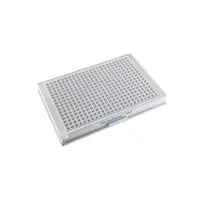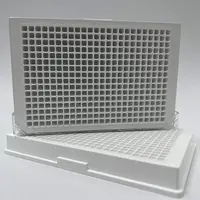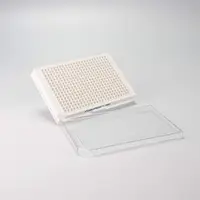
AlphaLISA Biotin-anti-Histone H4 Antibody, 40 µg






AlphaLISA® biotinylated monoclonal antibody recognizing the amino-terminal end of human histone H4. Broad species cross-reactivity is expected based on sequence similarity. This product is designed to be used with AlphaLISA® Epigenetics Acceptor beads to detect modified full-length histone H4 in homogeneous AlphaLISA assays.
For research use only. Not for use in diagnostic procedures. All products to be used in accordance with applicable laws and regulations including without limitation, consumption & disposal requirements under European REACH regulations (EC 1907/2006).
Product information
Overview
The biotinylated anti-Histone H4 antibody should be used with streptavidin-coated Alpha Donor beads and a matching AlphaLISA Acceptor bead to create your own AlphaLISA assay to detect modified Histone H4.
Features:
- No-wash epigenetic assay
- Fully-validated mark specificity
- Substrate flexibility (peptide, protein, histone, nucleosome substrates)
- Easy-to-automate
- Fast assay optimization
AlphaScreen® and AlphaLISA® are bead-based assay technologies used to study biomolecular interactions in a microplate format. The acronym "Alpha" stands for amplified luminescent proximity homogeneous assay. As the name implies, some of the key features of these technologies are that they are non-radioactive, homogeneous proximity assays. Binding of molecules captured on the beads leads to an energy transfer from one bead to the other, ultimately producing a luminescent/fluorescent signal. To understand how a signal is produced, one must begin with an understanding of the beads. AlphaScreen and AlphaLISA assays require two bead types: Donor beads and Acceptor beads. Each bead type contains a different proprietary mixture of chemicals, which are key elements of the AlphaScreen technology. Donor beads contain a photosensitizer, phthalocyanine, which converts ambient oxygen to an excited and reactive form of O2, singlet oxygen, upon illumination at 680 nm. Please note that singlet oxygen is not a radical; it is molecular oxygen with a single excited electron. Like other excited molecules, singlet oxygen has a limited lifetime prior to falling back to ground state. Within its 4 µsec half-life, singlet oxygen can diffuse approximately 200 nm in solution. If an Acceptor bead is within that proximity, energy is transferred from the singlet oxygen to thioxene derivatives within the Acceptor bead, subsequently culminating in light production at 520-620 nm (AlphaScreen) or at 615 nm (AlphaLISA). In the absence of an Acceptor bead, singlet oxygen falls to ground state and no signal is produced. This proximity-dependent chemical energy transfer is the basis for AlphaScreen's homogeneous nature.
Specifications
| Application |
Epigenetics
|
|---|---|
| Automation Compatible |
Yes
|
| Brand |
AlphaLISA
|
| Detection Method |
Alpha
|
| Experimental Type |
In vitro
|
| Format |
Microplates
|
| One Unit Contains |
1.0 each
|
| Species |
Human
|
| Shipping Conditions |
Shipped in Blue Ice
|
| Unit Size |
40 µg
|
Video gallery




How can we help you?
We are here to answer your questions.


































